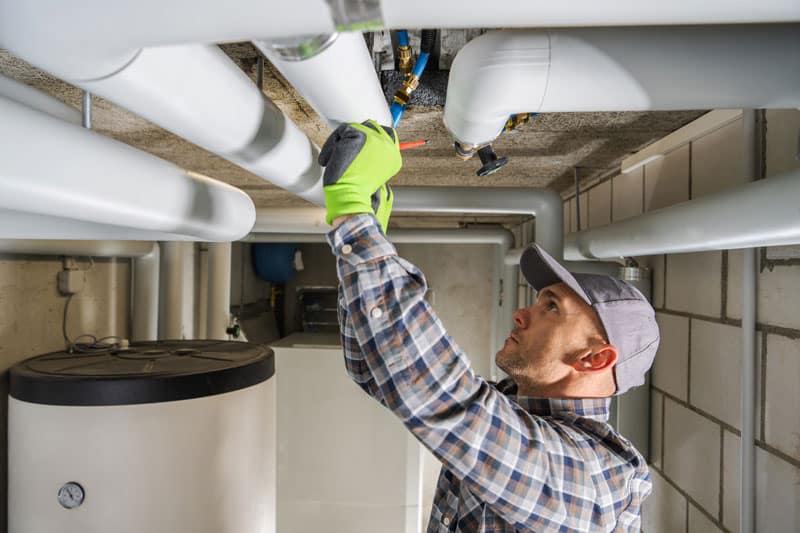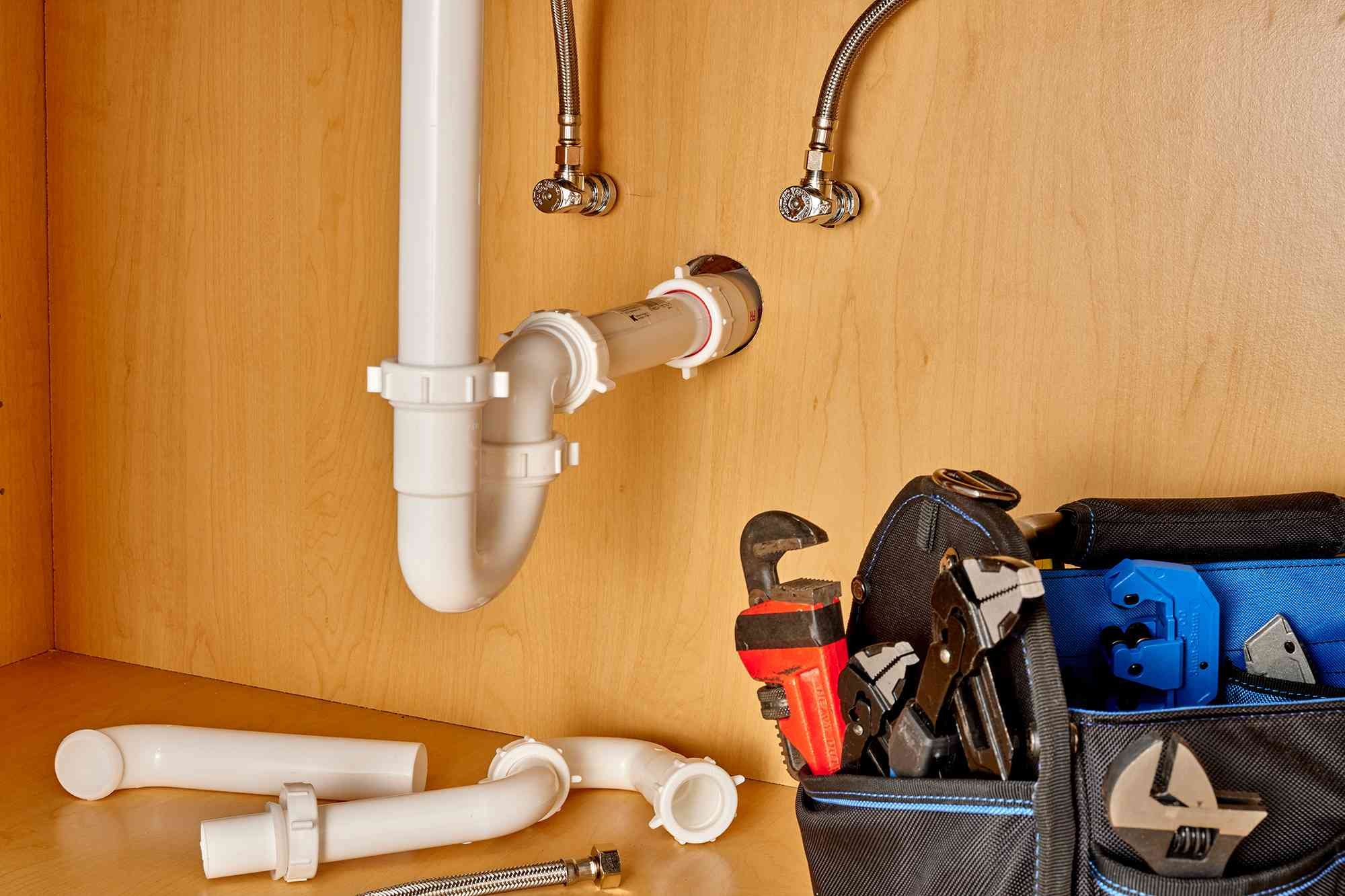What are your insights and beliefs on Plumbing Basics For Every Home: The HomeTriangle Guide?

Plumbing is an important facet of any type of home, responsible for supplying clean water for drinking, food preparation, and showering, along with eliminating wastewater securely. Recognizing the essentials of home plumbing is important for each property owner to guarantee correct upkeep, troubleshooting, and, if required, repairs. In this newbie's overview, we'll cover the essential concepts of home plumbing to help you come to be a lot more accustomed to how it works.
Water Heating System
The water heating unit is in charge of heating water for domestic usage, including showering, cooking, and cleaning. Common kinds of hot water heater consist of tank-type hot water heater, tankless (on-demand) water heaters, and heat pump water heaters. The water heater is attached to the water system system and supplies warm water to plumbing components as needed.
Water drainage System
The drainage system removes wastewater from your home and lugs it away to a sewer treatment center or septic tank. It includes a network of pipelines, installations, and components that move wastewater from plumbing fixtures to the main sewer line or sewage-disposal tank. Appropriate water drainage is essential to avoid blockages, backups, and sewer leakages.
Air flow System
The air flow system helps preserve appropriate air pressure and stop sewage system gases from entering your home. Air vent pipelines, likewise called air vent heaps, extend from plumbing fixtures to the roofing system, enabling drain gases to get away safely outside. Ventilation pipes also allow air to go into the drain system, assisting in smooth wastewater flow and avoiding suction or vacuum effects.
Water Supply System
The water supply system brings clean water right into your home from a local water source or a private well. It consists of a main water line that attaches to your home's plumbing system, generally situated underground. A water meter determines the amount of water eaten, while a shut-off shutoff enables you to regulate the circulation of water into your home.
Plumbing Fixtures
Plumbing components are gadgets that deliver water to numerous parts of your home and consist of sinks, faucets, commodes, showers, tubs, and appliances such as dishwashing machines and washing makers. Each component is linked to the water system system by means of pipelines and fittings and may have its shut-off shutoff for upkeep or emergencies.
Usual Plumbing Devices
Having the right tools available is necessary for executing basic plumbing repairs and upkeep tasks. Usual plumbing tools consist of adjustable wrenches, pipe wrenches, pliers, pipeline cutters, hacksaws, plungers, augers (or drainpipe serpents), and Teflon tape. Having these tools conveniently available can aid you deal with small plumbing problems successfully.
Fundamental Plumbing Repairs
While some plumbing repair services might require specialist assistance, lots of common problems can be resolved with fundamental do it yourself techniques. Understanding how to repair a dripping faucet, unblock a drainpipe, replace a bathroom flapper, or fix a dripping showerhead can conserve you money and time on plumbing repair work.
Conclusion
Recognizing the basics of home plumbing is vital for every single property owner to preserve a secure, functional, and effective plumbing system. By acquainting on your own with the water supply system, plumbing fixtures, drain system, ventilation system, common plumbing tools, and fundamental fixings, you can confidently deal with minor plumbing problems and ensure your home's plumbing system runs efficiently.
Understanding Basics of Home Plumbing System: A Beginner's Guide
The Main Components of Your Home Plumbing System
The Water Supply System
This system is responsible for transporting fresh water into your home. It usually has a main water line that splits into two branches: one directed towards cold water services and the other connected to a water heater for hot water. The pressure is key here; it ensures water reaches all parts of your house.
The Drainage System
Once water has been used, it becomes wastewater that needs to be removed from your home. This is where the drainage system comes into play. It includes all the pipes that carry wastewater and sewage away from your house to sewage treatment facilities or septic tanks.
The Vent System
The vent system prevents sewer gases from entering your home and helps maintain the pressure balance that allows wastewater to flow out properly. These vents usually exit through the roof of your house.
Water Heating System
For those who enjoy hot showers or using hot water for cleaning, the water heater is a crucial part of the plumbing system. It can be a tankless system, which heats water on demand, or a traditional water tank model.
Common Plumbing Problems and Basic Troubleshooting
Plumbing systems, while designed to be durable, can face issues like clogged drains, leaky faucets, or low water pressure. Here are some basic troubleshooting tips:
Clogged Drains
Use a plunger or a plumber's snake to try and dislodge whatever is blocking the drain. Regular cleaning can prevent clogs.
Leaky Faucets
Often caused by worn-out washers or gaskets, these can usually be replaced by someone with basic DIY skills.
Low Water Pressure
This might be due to sediment build-up in your fixtures or a leak somewhere in your water line. Cleaning out aerators or seeking a professional to detect leaks might be necessary.
Preventive Maintenance Tips
Maintaining your plumbing system is key to avoiding emergencies. Regularly check for leaks, avoid disposing of grease down the sink, and have your system inspected by a professional plumber at least once a year.

I hope you liked our piece about . Thanks for taking the time to read through our article post. Make sure you set aside a second to share this blog entry if you enjoyed it. Thank you so much for going through it.
Click Here